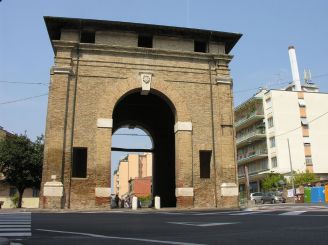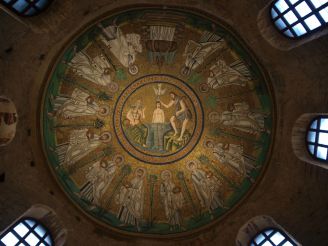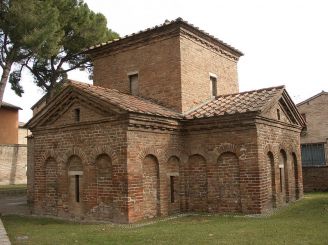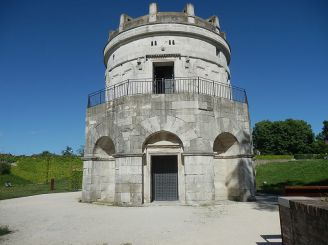Porta Serrata, Ravenna
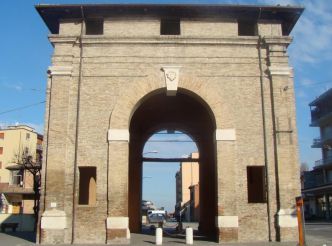
Porta Serrata was built during the Middle Ages and once served as a city gate in Ravenna. This beautiful monumental construction, however, lost its initial function and now only decorates the city landscape. The first time the gate was ever mentioned dates back to 1235. Originally, it was called Porta Anastasia; probably because it owned its name to the ancient family Anastagi (or Anastasi.) In the 14th century, the gate was moved 50 meters farther to the east which is how it received its current name. In 1511 Pope Julius II paid the city a visit and requested to rename the gate to Porta Giulia. In 1582 cardinal and legate Ferreri gave an order to rebuild the gate, that’s when it was embellished with marble brought from the ancient Roman port called Port'Aurea.
Currently, Porta Serrata is a separate construction. It is made of brick and detailed with white marble and Istrian stone. On each side of the arch, at the opening, there are two marble columns. You might also notice a plaque on marble balustrade that has the year when the restoration was performed written on it. The gate is embellished with simple geometrical ornaments. By the way, this construction is square-shaped, hollow inside and roofed.
How to get
Porta Serrata is located in the northern part of the historical center of Ravenna. Other significant landmarks can be found nearby as well, for instance, the Brancaleone Fortress, Mausoleum of Theoderic and Mausoleum of Galla Placidia. The closest bus stop is Porta Serrata. You can catch buses № 2, 3, 5, 18, 90, 140, 141, 161, 195 there.



